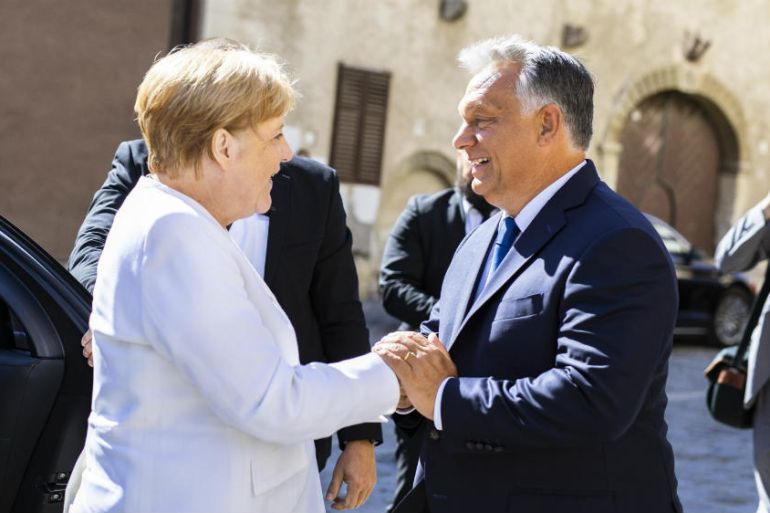Migration in focus on 30th anniversary of Pan-European Picnic
Thirty years after the Pan-European Picnic, leaders of Hungary and Germany are divided over how to treat asylum seekers.

The first crack in the Iron Curtain dividing Europe during the Cold War appeared in May 1989, when Hungary – then under Soviet rule – decided to start opening its border with Austria.
On August 19 of that year, the frontier was opened “symbolically” for a few hours for a pan-European picnic.
Keep reading
list of 4 itemsEU signs off on sweeping migration overhaul ahead of elections
Number of internally displaced people hit record 75.9 million in 2023
Tunisia: The migration trap
More than 600 East Germans who were holidaying in Hungary used the opportunity to break through to Austria as border guards stood aside. That mass exodus helped lead to the fall of the Berlin Wall three months later, heralding the collapse of other communist governments in Europe.
The topic of borders and free movement was once again in focus as the leaders of Hungary and Germany met on Monday in the western Hungarian town of Sopron to commemorate the 30th anniversary of the “Pan-European Picnic”.
|
|
German Chancellor Angela Merkel – who in 2015 opened her country’s borders to about one million asylum seekers – stressed the need to do more to tackle the root causes of refugee movements.
While Hungary’s Prime Minister Viktor Orban, a sharp critic of Merkel’s move, defended his decision to fortify his country’s southern borders, saying it was necessary to protect Europe.
Merkel and Orban’s last major meeting was in July 2018 when the former, incensed at the latter’s anti-migrant rhetoric and policies, accused him of failing to respect humanity.
Speaking at a news conference on Monday, Merkel admitted there were still “differences” between the pair over migration.
But she said she had faith in incoming European Commission President Ursula Von der Leyen to give fresh impetus to finding a common European approach to the migration question.
Asked about his country’s decision to erect hundreds of kilometres of fences along its southern borders to prevent migrants reaching the EU when it had been Hungary that helped tear down the Iron Curtain 30 years ago, Orban said that “these two kinds of behaviours are completely compatible with one another.”
The walls had been taken down in 1989 so people could live in peace and security, he said, and “the new ones are built precisely in order to preserve European peace and security”.
Earlier on Monday, the two leaders addressed an ecumenical church service in Sopron, close to where the picnic was held.
Orban hailed the fact that the events of 30 years ago had “cleared the way towards German reunification”.
Hungarians had always known that “our liberation from the Soviet yoke would be definitive [and] endure only once Germany was united,” he added.
Merkel recalled her own memories of seeing plans for the picnic advertised in 1989, remembering the “uncertainty and worry” when it became apparent it had turned into an escape to the West.
“Everyone knew how the uprising in East Germany in 1953 turned out, as well as the one in Hungary in 1956 and the Prague Spring,” she said.
She praised the “courage” and “humanity” of the Hungarian border guards who did not fire on the crowds on that day.
The events at the picnic reflected the values of “solidarity, freedom and a humane Europe”, she added.